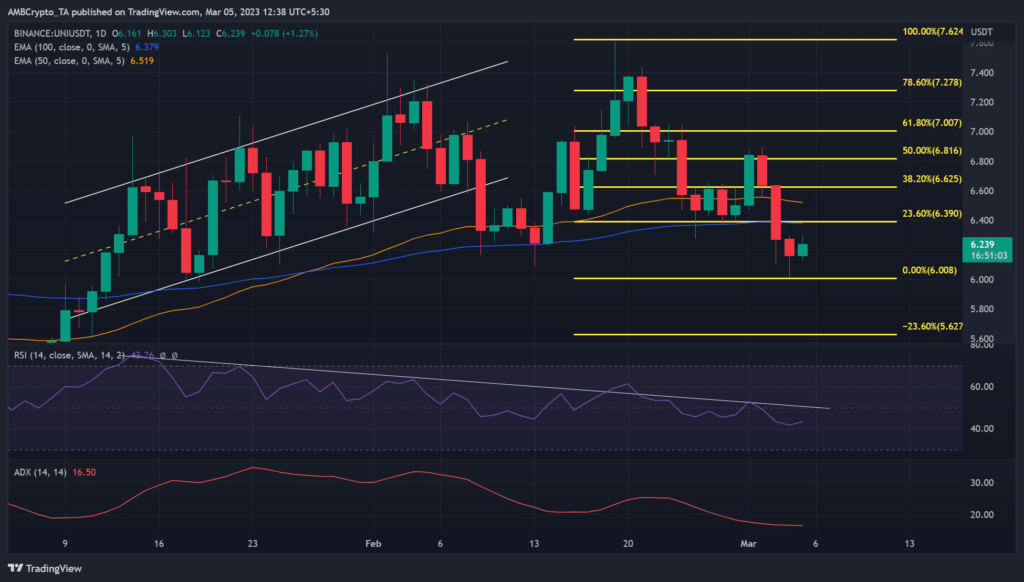Bad news for Uniswap, the decentralized crypto exchange that uses a series of smart contracts to execute transactions on its platform.
Reportedly, it appears that Apple is denying consent to Uniswap Labs regarding the launch of its mobile wallet. It should be noted that Uniswap is an open source project and falls under the category of a DeFi product because it uses smart contracts to facilitate exchanges.
Summary
The mobile wallet designed by crypto exchange Uniswap
Uniswap Labs has announced plans to release a new self-customized mobile wallet that will offer users the ability to swap over layer-1 or layer-2 networks without having to change blockchains.
According to Uniswap Labs, the wallet will allow users to check price charts and search for any token on various networks, including Ethereum, Polygon, Arbitrum, and Optimism. To ensure maximum security, Uniswap Labs has partnered with Trail of Bits to audit the wallet.
In addition, the seed phrases and private keys of imported and newly created wallets will be encrypted and stored on the devices using Apple’s Secure Enclave, which is excluded from device backups.
Uniswap also reported that users will be able to manually store their seed phrases with a hard copy or encrypt and store them on iCloud. In fact, Uniswap’s official Twitter profile reads the following:
1/ Introducing the Uniswap mobile wallet 🦄✨
A completely self-custodial, open-sourced mobile app from the most trusted name in DeFi.
Now available as a limited early release – through Apple TestFlight. pic.twitter.com/NmO8c0bXMs
— Uniswap Labs 🦄 (@Uniswap) March 3, 2023
Uniswap’s problems with Apple: what’s going on?
Even though the first version was approved in October, Uniswap Labs has had problems with Apple’s App Store regarding its mobile wallet.
Despite the approval of other self custody swapping wallets, the final build of Uniswap’s mobile wallet was rejected by Apple just days before its planned December 2022 launch.
Uniswap Labs said it has responded to Apple’s objections, all of its questions, and reiterated that it complies with its guidelines. However, Apple has not yet given the green light to launch and Uniswap Labs remains in limbo.
As a result, the exchange is offering early access to a few thousand Testflight users while waiting for Apple to approve the launch. In fact, in its announcement Uniswap points out the following:
“Apple doesn’t want to green light the launch and we don’t know why. We are stuck in limbo.”
On 6 February, members of the Uniswap community voted in favor of implementing Uniswap v3 on Ethereum’s Boba Network, layer-2 protocol.
This means that Boba Network will be the sixth chain to deploy Uniswap v3. The move was supported by several entities, such as GFX Labs, Blockchain at Michigan, Gauntlet and ConsenSys.
Focus on the price of Uniswap (UNI) crypto
After rejecting the price at $7,624 on 18 February, Uniswap (UNI) depreciated by 20%. In fact, the native DEX token traded at 6,239 and turned green as bullish traders attempted to front a recovery.
However, fundamentals and key metrics offered mixed results, urging investors to be cautious. At the peak of the January rally, UNI entered a price consolidation and formed an ascending (white) channel.

Price action fell below the channel in early February, but was checked by the 100-day EMA (exponential moving average). However, the bullish was strengthened after a retest of the pullback on the 100-day EMA offered a strong recovery, leading UNI to reach resistance above $7,624.
The retracement after the price rejection at $7,624 undermined a successful recovery. The bearish could re-enter the market if UNI fails to close above the 23.6% Fibonacci level ($6,390).
They could take advantage of short selling the asset at $6. The stop loss could be set above $6,390. Conversely, a daily close above the 23.6% Fibonacci level could push the bullish to the 38.6% ($6,625), 50% ($6,816) or 61.8% ($7,007) Fibonacci levels.
If Bitcoin (BTC) tests $25k again, UNI could swing to the upper resistance level of $7,624. However, the RSI on the daily chart has shown increasing divergence.
In addition, the Average Directional Movement Index (ADX) has retreated, showing that the UNI market has weakened and could enter consolidation or further retracement. However, the 100-day EMA has moved horizontally, showing that a consolidation could be possible in the medium term.

